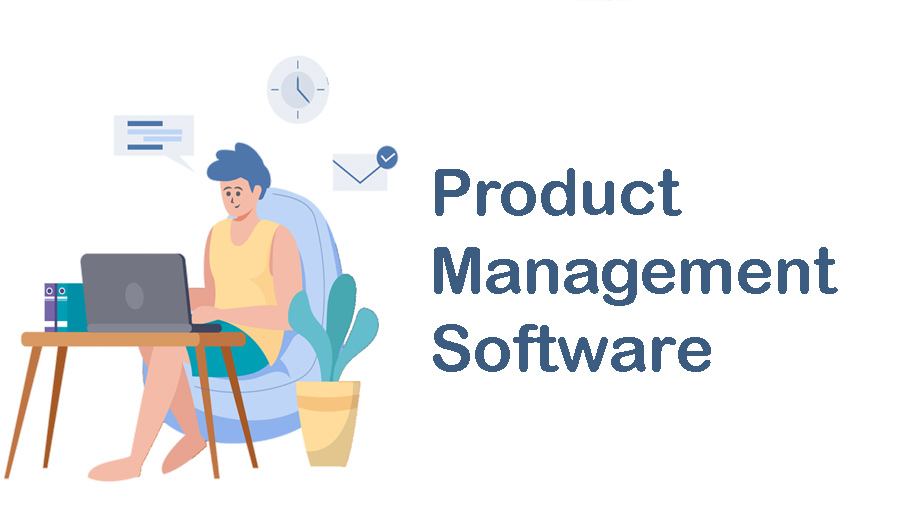
Life Of Product Managers With/Without Product management Software
Product managers play a pivotal role in an organization as they are responsible for the overall success of a product. With new technological advancements every other day, the job of a product manager is becoming increasingly complex. This article explores the day-to-day workflows of product managers with and without product management software to help understand the value such tools bring to the table.
A Day In The Life Of A Product Manager Without Software
Meet Aarav, a senior product manager at a leading SaaS startup. Here’s a glimpse of a typical day in his work life without any dedicated product management software:
- Gathering requirements: Aarav starts his day by sorting through emails, messages and documents to track down requirements detailed for the latest product release. This is a tedious and time-consuming process.
- Organizing tasks: With requirements scattered across different sources, it’s difficult for Aarav to maintain a centralized task list. He ends up storing tasks on sticky notes, whiteboards and disparate documents.
- Assigning tasks: Without a centralized task management system, Aarav has to manually assign tasks to each teammate over calls or by forwarding individual emails.
- Tracking progress: To keep an eye on progress, Aarav needs to follow up with the team over messages or by visiting their desks. This is far from an efficient process.
- Managing bugs: Bug reports flood Aarav’s inbox daily, making it strenuous for him to organize and prioritize fixes. Many bugs fall through the cracks in this manual approach.
- Reporting status: Come weekly stand-ups, Aarav struggles to compile updates, blockers and metrics without a centralized system in place.
- Planning future releases: It’s a hassle for Aarav to plan future product updates and conceptualize new features without a proper tracking solution.
As you can see, life as a product manager is difficult without the right project management tools to streamline workflows. Let’s explore how dedicated software makes a difference.
Day In the Life With Product Management Software
Meet Aarti, a product manager who uses a best product management platform:
- Gathering requirements centrally: All requirements are documented, discussed and prioritized within the software’s dedicated tracker.
- Organizing tasks: Tasks are automatically generated from requirements and synced to the kanban-style board for easy visualization and prioritization.
- Assigning tasks: Tasks self-assign to the relevant team using integrated intelligent assignment rules.
- Tracking progress: Progress updates are automatically reflected on cards as teammates update statuses from within the tool or their IDE/code editors.
- Managing bugs: The dedicated bug tracker allows classifying, assigning, prioritizing and setting reproducible steps for reported issues.
- Reporting status: Weekly report templates auto-populate with updates from across boards, trackers and dashboards to share progress.
- Planning future releases: Roadmaps provide a bird’s-eye view of upcoming milestones. Customizable workflows facilitate conceptualizing future features.
As seen, Aarti’s tasks are streamlined, streamsessed and more strategic thanks to embedded automation and insights from her product management tool. Let’s break down the key differences in more detail:
Requirements Management
Without software, requirements tracking involves storing information across several places lacking a single source of truth. This leads to miscommunication, rework and delays.
Modern tools centralize requirements within an integrated tracker, making collaboration easier. For example, Recruitment CRM Software is particularly used for managing candidate information and communications efficiently to improve the hiring process. Features like discussion threads, commenting and custom fields ensure that all details are documented for future reference.
Task Management
Manually managing tasks is frustrating and inefficient. Tasks assigned over calls/emails are easily missed. Utilizing work schedule planner templates can help streamline task management and ensure nothing falls through the cracks.
Integrations automatically generate tasks from requirements for centralized tracking on digital boards. Team members are notified of assigned tasks via customizable notifications.
Project Planning
Without Roadmaps, future planning lacks visibility and direction. Features are conceptualized in isolation.
Platforms provide high-level Roadmaps, Customizable workflows and release tracking to plan strategically and gain team buy-in for new initiatives.
Status Reporting
Manual reporting is tedious and error-prone. Insights are anecdotal instead of data-driven.
Automated, template-based reporting populates seamlessly from updates across tools for fact-based weekly/monthly stand-ups saving significant time.
Bug Tracking
Unorganized bugs piled on PMs are hard to triage and reproduce and often fall through cracks.
Dedicated trackers improve visibility. Features like custom fields, screenshots, embeddable replications facilitate faster resolution of issues.
Resource Management
It’s difficult juggling multiple moving parts like team availability, workloads etc. manually.
Tools provide a 360-degree view of resource capacity and allocation with customizable permissions for efficient load-balancing.
Stakeholder Communication
Feedback is scattered across calls/messages lacking transparency for stakeholders.
Web and mobile dashboards facilitate sharing updates and gathering feedback in real-time for increased visibility and trust with executives.
Product Decisions
Limited data and manual workflows often lead to inefficient or misguided product decisions.
Software equips PMs with reports, analytics and customizable feedback surveys to make evidence-based strategic calls for long-term success.
In summary, while product managers can survive without dedicated tools, their workflows will remain fragmented, time-consuming and prone to issues. This negatively impacts productivity, collaboration as well as product quality and business outcomes in the long run.
With advances in product management technology, standalone PMs struggling today will soon seem outdated. Much like CRM revolutionized sales processes, product platforms are set to transform the way products are envisioned, engineered and delivered to customers across all industries.
Key Factors In Choosing The Right PM Software
There are over 75+ product management tools currently available to help organizations streamline workflows. With plenty of options, evaluating what works best can become overwhelming without research. Some factors to consider include:
Ease of Use – Prioritize intuitive and easy to learn interfaces requiring little training. Steep learning curves hamper adoption.
Collaboration – Look for activity feeds, @mentions, commenting and seamless integrations for free-flowing team synergy.
Customization – Flexible templates, workflows and custom fields tailored to your unique processes deliver best results.
Integrations – Check for integrations with tools already in use like Jira, Slack, github for a unified experience.
Pricing – Costs depend on your team size with either one time or monthly subscription-based models. Look for value for money.
Scalability – The platform’s ability to scale as your organization grows is important for future-proof investments.
Features – Consider needs like goal tracking, releases, surveys, dashboards, resource view etc. Different bundles cater varying needs.
Roles – Support tailored views for designers, engineers, stakeholders, executives and project managers.
Learning Resources – Access to guides, demo videos and communities eases the learning curve for self set up and ongoing training.
Support – Opt for platforms proven active with community forums, 24/7 tickets, training resources and account managers for quicker resolutions.
Established platforms such as JIRA Software, VersionOne, and ProductPlan have set the bar high for product success by continuously adding value through the listed best practices over the years. Trial versions help find the right system suited to your unique product culture and KPIs.
Success Lies in Streamlining
Without a doubt, life becomes much smoother and strategic for product managers adopting the right software. Key differences at both tactical and strategic levels become immediately apparent as manual toils are replaced with value-adding activities.
By leveraging the right collaborative tools grounded in data and insights, PMs become equipped to unlock their true potential and create more impactful products delivering optimal customer experiences and business results.
Author Bio
Pratik Sable is a digital marketing expert with over 5 years of experience helping businesses optimize their email marketing strategies. Pratik has honed his skills in crafting data-driven email campaigns that drive measurable results for clients across various industries.
He is passionate about staying up-to-date with the latest trends and best practices in email marketing. He frequently shares his insights on his personal blog and through guest contributions on industry-leading publications. When he’s not strategizing the next big email campaign, you can find Pratik exploring the great outdoors or experimenting with new recipes in the kitchen.





